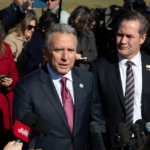HTS Consolidates Control in Post-Assad Syria
In a historic turn, Hay’at Tahrir al-Sham (HTS) leader Abu Mohammed al-Jawlani has announced the formation of a new cabinet under the Syrian Transitional Government (STG) following the fall of President Bashar al-Assad. The announcement, made on March 30, signals HTS’s growing dominance in post-Assad Damascus amid ongoing conflicts across Syria.
HTS’s Cabinet Composition Raises Eyebrows
Al-Jawlani, a former commander of Jabhat al-Nusra, named 23 ministers, including minorities such as Christians, Druze, Kurds, and Alawites. However, HTS loyalists dominate key ministries, and critics point to nepotism, especially after al-Jawlani appointed his brother as head of the General Secretariat. This move has fueled concerns that the group’s inclusion strategy may be superficial.
Western Skepticism Grows
While France and other Western nations urge reforms, skepticism remains high. Many officials question HTS’s ability to govern a diverse population and prevent Syria from becoming a jihadist hub. Despite a charm offensive aimed at international audiences, violence persists in outlying regions, challenging the STG’s control and legitimacy.
Continuing Conflicts Undermine Stability
Clashes continue across Syria, particularly between HTS forces and Kurdish fighters in the north and remnants of Assad-loyalist factions in coastal regions. Attempts to integrate former rebel and Islamist militias into a centralized force have largely failed, further complicating security dynamics. Reports highlight that most militias refuse to disband or submit to central authority.
Ethnic Tensions and Militia Power
Violence and ethnic strife have resurfaced in Alawite strongholds and Kurdish territories. Pro-HTS forces have clashed with Assad loyalists in Latakia, raising alarms about the STG’s limited control over its own security apparatus. International observers fear the ongoing influence of loosely affiliated armed groups could sabotage fragile governance efforts.
HTS Strategy: Reform or Retaliation?
HTS’s incorporation of Islamic State (IS) defectors and other extremist elements into its police and security services complicates efforts to establish a credible rule of law. Critics warn that such moves could be motivated more by tactical needs than a genuine commitment to reform or demilitarization.
Jihadist Governance Under Scrutiny
HTS’s roots in al-Qaeda and its past activity during Iraq’s insurgency remain a major concern for U.S. and European governments. Foreign fighters still operate within Syria, and any failure to contain them risks destabilizing neighboring regions and Europe. A limited agreement with the Syrian Democratic Forces (SDF) in Aleppo offers some hope, but widespread integration remains elusive.
Looking Ahead: Can HTS Govern?
Despite al-Jawlani’s attempt to present a modern, inclusive face for HTS, the group’s extremist history and ongoing instability present daunting challenges. Until jihadist elements are brought under control and inclusive governance is proven more than cosmetic, HTS’s hold on power will remain under international scrutiny.
Category: Middle East Politics, Conflict & Security, Islamic Militancy
Tags: HTS, Syria civil war, Damascus power shift, al-Jawlani, Assad collapse, jihadist governance, Syrian Transitional Government, Kurdish forces Syria, Islamic State Syria, militant integration









